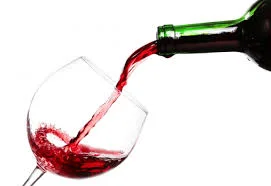Fete du Bordeaux, the annual gathering at the Four Seasons: a deep dive into outstanding Bordeaux wines and an extraordinary dinner seated next to the CEO of Cos d’Estournel.
France: Jean-Guillaume Prats of Cos d’Estournel
After some Dom Perignon and passed hors d’oeuvres I sat down to a dinner with seventeen glasses in front of me. That was just my place setting. Since I was at a table for ten, 170 glasses sparkled before me. And every table in the large room was similarly set. Suddenly I wished I had brought my sunglasses.
The occasion was the “Fete du Bordeaux,” an annual wine dinner at the Four Seasons restaurant hosted by Sherry-Lehmann, the highly regarded Madison Avenue wine shop. Michael Aaron, the chairman of Sherry-Lehmann, and his wife, Christine, who are weekend residents of East Hampton, were among a number of people from the East End attending.
The per person price of $275 seemed expensive at first glance but actually turns out to be quite a bargain when you analyze the number and quality of the wines, not to mention the classically beautiful food, the surroundings, and the chance to mingle with a who’s who of wine professionals and collectors. The event sells out every year.
Dinner began with grilled scallops accompanied by a fragrant and refined Blanc de Lynch-Bages, the only dry white with dinner. Breast of Peking duck was matched with a flight of six 2002 Bordeaux reds. They were young but not unseasoned. All seemed to be produced a modern style that can be drunk early and that we see more and more often in French wines, even from important estates. All were elegant, sinewy, and ready to drink. Though most would mature over time, none, in contrast to the acclaimed 2000 vintage, seemed to demand more aging in order to satisfy.
Short ribs of beef brought another flight of the same six labels, five from the mid 1990s and one 1989. Predictably, these were more profound and complex than the younger wines and presented a more challenging taste experience. Chateau Leoville Barton and Chateau Lynch-Bages seemed particularly appealing to me.
The cheese course was accompanied by older vintages of two of the six we had sampled, Chateau Marbuzet 1988 and Chateau Cos d’Estournel 1986, a rich wine, full-bodied and highly extracted, with a powerful cabernet sauvignon character. Interestingly, though this was the oldest vintage, with a compelling taste, it seemed one that could still benefit from additional aging, something that reflects well on its balanced classic qualities. The dessert, hazelnut crunch, was paired with Chateau Suduiraut, a beautiful Sauternes.
This year’s dinner honored Jean-Guillaume Prats, the president and chief executive of Cos d’Estournel, a grand cru from the Saint-Estephe area of Bordeaux. After several generations of family ownership, the chateau was sold in 1998 but Mr. Prats, the 34-year- old scion of the family is still responsible for its operations. Mr. Prats represents an energetic, dynamic, and contemporary new approach to the wine business in France. He speaks perfect English with a clipped British accent (he was partly educated in England) and combines worldly marketing savvy with traditional winemaking knowledge. In conversation (he was seated next to me at dinner) it became clear that he and his generation in France are not content to simply conduct business as usual.
Cos d’Estournel is generally acknowledged as the leading estate in St.-Estephe, and we may safely predict that it will remain in this pre-eminent position for some time. But at the same time, Mr. Prats is developing another brand. Not just a second or third label from the estate, this brand is the result of a separate location and a separate “avant-garde” winery located in the Medoc.
Named Goulée, it is a wine with an intentionally ambiguous style. Though it has a Bordeaux pedigree, it will taste more like a New World wine, or, as Mr. Prats describes it, “totally international, a modern style of Bordeaux, a wine intended for pleasure.” It’s a fascinating idea. While New World winemaking has undoubtedly influenced Europe, and while important French estates have set up operations in California and Chile and other places, I don’t know of anyone else who has decided to bring the New World to the old in quite such a deliberate, market-driven way.
Small quantities of Goulée will be released in 2005 and will sell for about $30 a bottle. Prices for various vintages of Cos d’Estournel range from $50 to $300 at Sherry- Lehmann. It will be interesting to follow the progress of both these labels and of the talented and enterprising Jean-Guillaume Prats.



